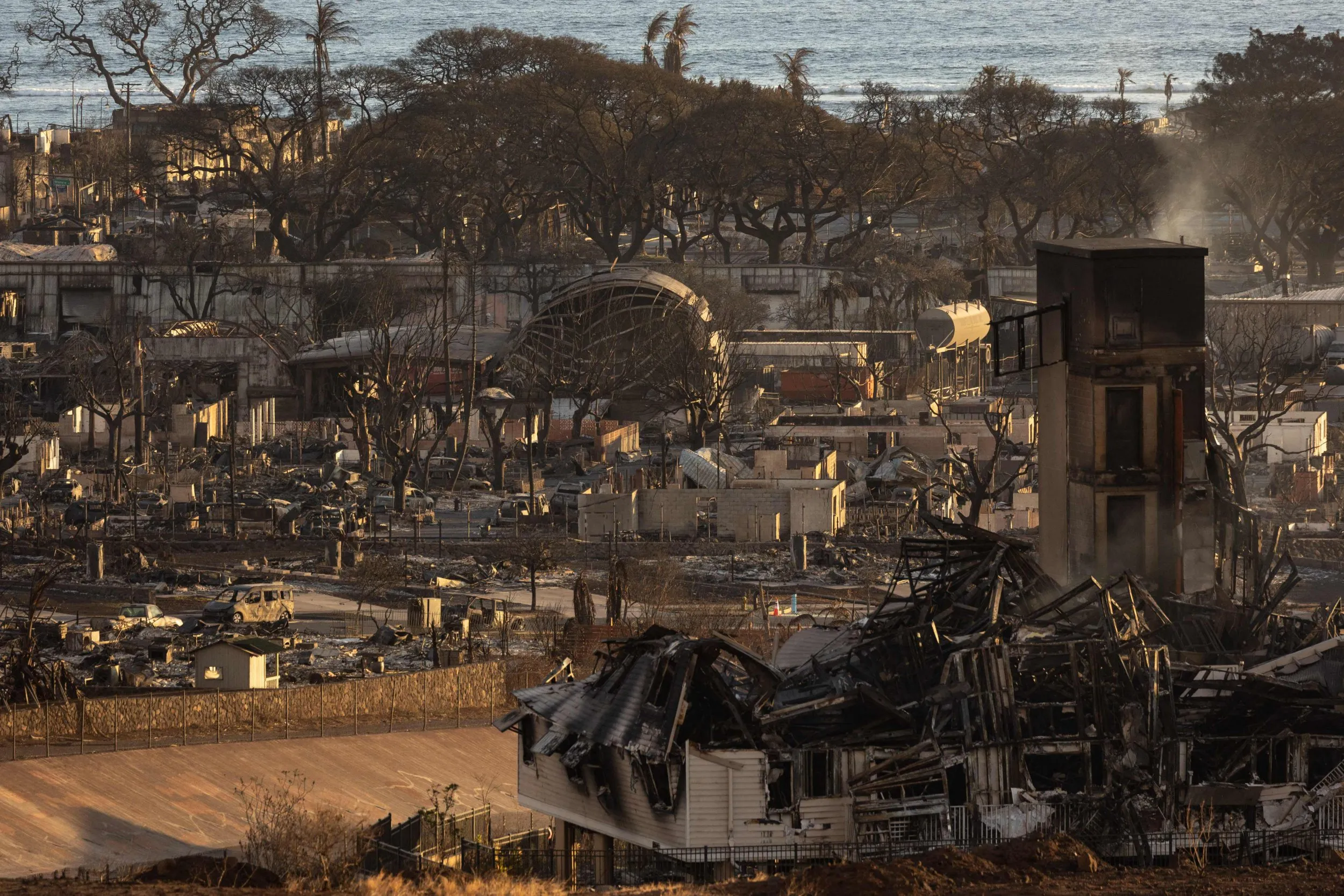The Maui Wildfires: A Tragic Event in August 2023
In August 2023, the Hawaiian island of Maui experienced one of the most devastating wildfires in its history. The fires, which erupted on August 8, rapidly spread across the island, leading to catastrophic destruction, loss of life, and significant displacement of residents. This article will provide an in-depth analysis of the events surrounding the wildfires, their causes, impacts, and the ongoing recovery efforts.
Overview of the Wildfires
The wildfires in Maui were unprecedented in scale and intensity. They primarily affected the historic town of Lahaina, which was once the capital of the Kingdom of Hawaii and is known for its rich cultural heritage and tourism. The fires destroyed thousands of homes and businesses, leading to a humanitarian crisis as residents were forced to evacuate.
Timeline of Events
- August 8, 2023: The wildfires began in various locations across Maui, fueled by dry conditions and strong winds from Hurricane Dora, which was passing south of the island. The combination of drought conditions and high winds created an environment ripe for rapid fire spread.
- August 9, 2023: Emergency services struggled to contain the fires as they rapidly spread. Evacuations were ordered in multiple areas, including Lahaina, where the flames engulfed neighborhoods, causing widespread destruction.
- August 10, 2023: The situation escalated as the fires continued to spread. Reports emerged of significant loss of life, with emergency responders working tirelessly to rescue those trapped by the flames.
- August 11, 2023: The fires were declared a major disaster, prompting federal assistance. Search and rescue operations were underway, with thousands of residents displaced and seeking shelter.
- August 12, 2023: The death toll continued to rise as search efforts revealed more victims. The destruction of Lahaina was particularly devastating, with iconic landmarks reduced to ash.
Causes of the Wildfires
Several factors contributed to the severity of the wildfires in Maui:
- Drought Conditions: Prior to the wildfires, Maui had been experiencing a prolonged drought, which dried out vegetation and made it highly susceptible to ignition.
- Hurricane Winds: The strong winds from Hurricane Dora, although not directly impacting Maui, contributed to the rapid spread of the fires. Winds exceeding 60 mph fanned the flames and spread embers across vast distances.
- Invasive Species: The presence of invasive grasses and plants, which are more flammable than native vegetation, exacerbated the fire risk. These species have proliferated in Hawaii and have made fire management more challenging.
- Climate Change: Experts have pointed to climate change as a significant factor in increasing the frequency and intensity of wildfires across the globe, including Hawaii. Rising temperatures and changing precipitation patterns contribute to drier conditions.
Impact of the Wildfires
The impact of the Maui wildfires was profound and multifaceted:
Loss of Life and Displacement
- Fatalities: As of mid-August, the wildfires resulted in over 100 confirmed deaths, making it one of the deadliest natural disasters in Hawaii’s history. Many individuals were reported missing, and the search for victims continued for weeks.
- Displacement: Thousands of residents were displaced from their homes, with many seeking refuge in emergency shelters. The loss of housing and community infrastructure created an urgent need for humanitarian assistance.
Economic Consequences
- Tourism: Maui’s economy heavily relies on tourism, and the wildfires had an immediate impact on this sector. Many businesses were destroyed, and the island faced a significant decline in tourist arrivals.
- Reconstruction Costs: The estimated costs for rebuilding homes, businesses, and infrastructure are in the billions. The long-term economic recovery will require substantial investment and support from both state and federal governments.
Environmental Damage
- Ecosystem Disruption: The wildfires caused extensive damage to Maui’s unique ecosystems, threatening native species and habitats. Recovery of these ecosystems will take years, if not decades.
- Air Quality: The fires generated significant smoke and ash, leading to poor air quality across the island. Health officials warned residents about the dangers of inhaling smoke and advised those with respiratory issues to take precautions.
Response and Recovery Efforts
In the aftermath of the wildfires, local, state, and federal agencies mobilized to provide assistance and support to affected communities:
- Emergency Response: First responders, including firefighters, police, and emergency medical personnel, worked around the clock to contain the fires and assist with evacuations.
- Federal Assistance: President Biden declared a major disaster, allowing for federal funds to be allocated for recovery efforts. The Federal Emergency Management Agency (FEMA) provided resources for disaster relief and recovery.
- Community Support: Local organizations and volunteers rallied to provide aid to those affected. Food banks, shelters, and donation drives were established to assist displaced residents.
- Long-term Recovery Plans: As the immediate response transitioned to long-term recovery, officials began assessing the damage and developing plans for rebuilding. This includes addressing housing needs, infrastructure repair, and environmental restoration.
Community Resilience and Rebuilding
The spirit of resilience among the people of Maui has been evident in the wake of the wildfires. Community members have come together to support one another, sharing resources and providing emotional support. The rebuilding process will require collaboration among residents, local leaders, and government agencies to ensure that the community emerges stronger than before.
Lessons Learned
The Maui wildfires serve as a stark reminder of the increasing threat posed by climate change and the importance of preparedness and resilience in the face of natural disasters. Key lessons include:
- Preparedness: Communities must prioritize disaster preparedness, including creating evacuation plans, establishing emergency communication systems, and conducting regular drills.
- Environmental Management: Effective land management practices, including controlling invasive species and maintaining healthy ecosystems, are essential for reducing fire risk.
- Community Engagement: Engaging residents in disaster planning and response efforts fosters a sense of ownership and strengthens community resilience.
Conclusion
The wildfires in Maui in August 2023 were a tragic event that resulted in significant loss of life, displacement, and destruction. The response and recovery efforts highlighted the resilience of the community and the importance of collaboration in rebuilding. As Maui moves forward, the lessons learned from this disaster will be crucial in enhancing preparedness and resilience to future challenges.
FAQ Section
Q: What caused the Maui wildfires?
A: The wildfires were caused by a combination of drought conditions, strong winds from Hurricane Dora, the presence of invasive species, and the impacts of climate change.
Q: How many people were affected by the wildfires?
A: Thousands of residents were displaced, and over 100 fatalities were confirmed, making it one of the deadliest natural disasters in Hawaii’s history.
Q: What is being done to help those affected?
A: Emergency response efforts included evacuations, federal assistance, and community support initiatives to provide food, shelter, and resources to displaced residents.
Q: How can I help those affected by the wildfires?
A: You can help by donating to local organizations providing aid, volunteering your time, or supporting relief efforts through established charities.
Q: What are the long-term recovery plans for Maui?
A: Long-term recovery plans involve assessing damage, rebuilding homes and infrastructure, and implementing strategies for environmental restoration and community resilience.
Table: Key Statistics from the Maui Wildfires
| Statistic | Value |
|---|---|
| Date of Wildfires | August 8, 2023 |
| Confirmed Fatalities | Over 100 |
| Displaced Residents | Thousands |
| Estimated Reconstruction Costs | Billions of dollars |
| Areas Most Affected | Lahaina, Kula, Upcountry |
| Federal Disaster Declaration | August 10, 2023 |
Source: Maui Wildfires – WikipediaThis article aims to provide a comprehensive overview of the events surrounding the Maui wildfires, their impact, and the ongoing recovery efforts.






More Stories
How to See Your Apple ID Password
How to Delete Apps on Apple TV
How Much is the Juice of One Lemon